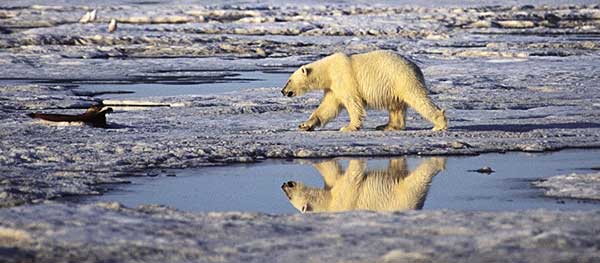Time Running Out To Meet Global Warming Target- UN Report
By Countercurrents
07 April, 2014
Countercurrents.org

“World powers are running out of time to slash their use of high-polluting fossil fuels and stay below agreed limits on global warming”, says the IPCC draft report. This is the third and final study in a UN series about climate change, updating findings from 2007.
Alister Doyle, Reuters Environment Correspondent reported from Oslo [1]:
“Government officials and top climate scientists will meet in Berlin from April 7-12 to review the 29-page draft that also estimates the needed shift to low-carbon energies would cost between two and six percent of world output by 2050.
“It says nations will have to impose drastic curbs on their still rising greenhouse gas emissions to keep a promise made by almost 200 countries in 2010 to limit global warming to less than 2 degrees Celsius over pre-industrial times.
“Temperatures have already risen by about 0.8 C since 1900 and are set to breach the 2 C ceiling on current trends in coming decades, U.N. reports show.”
This third chapter of the Intergovernmental Panel on Climate Change (IPCC)’s Fifth Assessment Report will move away from the causes and scientific consensus of climate change (covered in the first chapter) and the impacts of global warming and changing climate patterns (covered in the second), and focus on the possible steps that can be taken to avoid the very worst case scenarios that scientists have set forth.
The report cited Johan Rockstrom, head of the Stockholm Resilience Centre, and an expert on risks to the planet from heatwaves, floods, droughts and rising seas saying:
“The window is shutting very rapidly on the 2 degrees target. The debate is drifting to 'maybe we can adapt to 2 degrees, maybe 3 or even 4.”
Such rises would sharply raise risks to food and water supplies and could trigger irreversible damage, such as a meltdown of Greenland 's ice, according to UN reports.
The draft outlines ways to cut emissions and boost low-carbon energy, which includes renewables such as wind, hydro- and solar power, nuclear power and "clean" fossil fuels, whose carbon emissions are captured and buried. Such low-carbon sources accounted for 17 percent of the world's total energy supplies in 2010 and their share would have to triple - to 51 percent - or quadruple by 2050, according to most scenarios reviewed.
That would displace high polluting fossil fuels as the world's main energy source by mid-century.
Another report released by the IPCC last week in Japan showed warming already affects every continent and would damage food and water supplies and slow economic growth. It may already be having irreversible impacts on the Arctic and coral reefs.
“The new draft shows that getting on track to meet the 2C goal would mean limiting GHG emissions to between 30 and 50 billion tonnes in 2030, a radical shift after a surge to 49 billion tonnes in 2010 from 38 billion in 1990.
“The shift would reduce economic output by between 2-6 percent by 2050, because of the costs of building a cleaner energy system based on low-carbon energies that are more expensive than abundant coal, the IPCC said.
“Capturing carbon dioxide is also expensive, it added.
“One option is to let temperatures overshoot the 2C target while developing technology to cool the planet by extracting GHG from the atmosphere, the draft says.
“Extracting carbon from nature includes simple measures such as planting more trees, which soak up carbon as they grow, or capturing and burying GHG from electricity-generating plants that burn wood or other plant matter.
“A problem is that markets for trading carbon dioxide focus on cuts in emissions at power plants and factories burning fossil fuels, not renewable energies which are viewed as green.”
The report cited Jonas Helseth, director of environmental group Bellona Europe who chairs a group of scientists and industry experts looking at burying emissions from renewable energy saying: “In Europe there is no incentive”.
The September report raised the probability that human actions, led by the use of fossil fuels, are the main cause of climate change since 1950 to at least 95 percent from 90. But opinion polls show voters are unpersuaded, with many believing that natural variations are the main cause.
Comments are moderated
